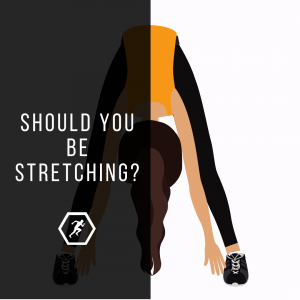 “My hip flexors are tight, do you know a stretch for that? Have you got a stretch for tight hamstrings? My posture is rubbish, got any pec stretches?”
“My hip flexors are tight, do you know a stretch for that? Have you got a stretch for tight hamstrings? My posture is rubbish, got any pec stretches?”
Are examples of some of the most common questions I receive as a strength and conditioning coach and personal trainer.
Anything that is not quite right with an area of the body and the first thing that comes to mind for many is that there NEEDS to be a stretch for it.
The thing with stretching is that… there’s hardly any scientific evidence to say that it does… anything at all actually.
With very limited/hardly any evidence supporting its use for an effective warm-up, in preventing muscle soreness or in preventing injury. There’s even evidence saying it can reduce tendon stiffness (not good for power athletes) and reduce strength performance!
When you read deep into what stretching really is, it’s just an activity that helps you increase your mental tolerance to the discomfort of a certain range of motion. This makes the process of stretching a muscle more of a neuromuscular process than an actual structural change in the muscle.
So, does this mean you should knock stretching on the head completely if there is no actual long-term change?
NO!
But why shouldn’t we stop stretching is it doesn’t make a long-term difference?
Well… although stretching appears to be a placebo…. it still does some of what it claims to do.
It can make you FEEL like your muscles are looser, it can make it FEEL like you can reach new ranges of motion and it can make it FEEL like muscle soreness has been reduced slightly.
Using stretching as a method of tricking the body into getting what you want from it can therefore be advantageous.
But what actually improves flexibility? The answer… loaded stretches!
If your goal is to actually be more mobile and flexible in practical/sporting situations, training through a full range of motion and gaining strength in the deepest range of motion you can reach will be your most effective and time efficient option.
You can still stretch in your warm-up, however use it as tool to simply achieve certain positions and let your strength exercises make the permanent change!
For example, mobilise and stretch ankles and hips to achieve a deeper squat initially but the loaded squat itself is what will make the long-term change to mobility and flexibility (likewise with other lifts).
Another question to be asked is WHY you have a tight area of the body. Unless injured, this will most likely be due to a poorly designed training programme or poor exercise technique (poor range of motion).
A well-designed training programme should address your weak/immobile areas with specific exercises that load these ranges of motion.
If you are failing to target your tight and immobile areas of your body, please enquire about coaching so we can design a programme that fits your needs!
Consultation Form: https://highperformancestrategies.wufoo.com/forms/z14qxxod0zqdmlo/
 Yoga has become increasingly more popular in recent years. But should YOU be doing yoga.
Yoga has become increasingly more popular in recent years. But should YOU be doing yoga.
Recent Comments